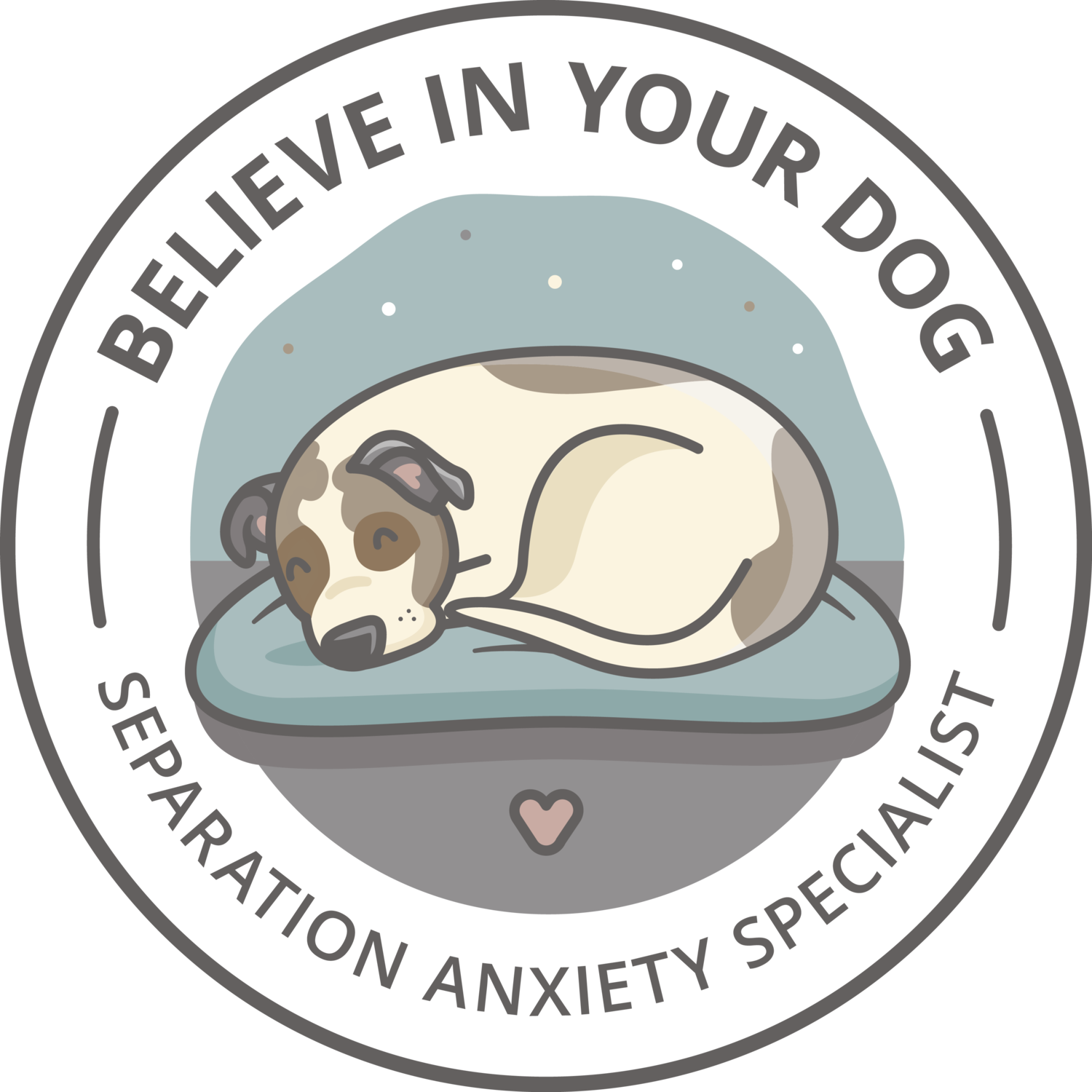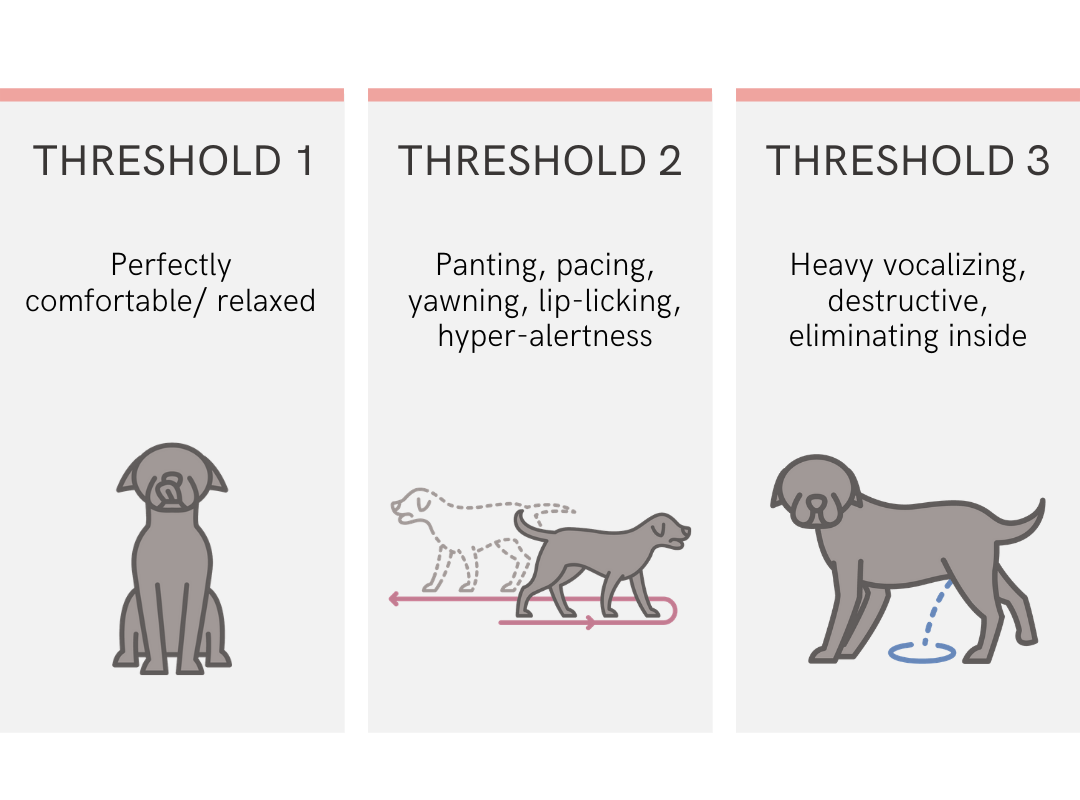6 Mistakes You Can’t Afford to Make When Treating Separation Anxiety
Sharing your life with a dog with separation anxiety isn’t easy. Neighbors complain about the incessant barking that starts the moment you leave and persists until you return. Your house gets destroyed every time you’re away. You come home to find your beloved companion clearly in a state of panic. Maybe your dog has even resorted to injuring himself during periods of being left alone.
But what if I told you that there is hope? What if separation anxiety could be successfully treated with a carefully-constructed behavior plan? I know this is true, because it’s how I have resolved this behavior problem over and over again for my clients. You can break free from the prison of your home and get back to the love & joy with your dog.
The first step is to avoid the most common mistakes that will make the problem worse. The pitfalls of repeating these misguided behaviors are great; you take a giant step backwards in your treatment plan each time you do.
1. Not Training at the Right Threshold
In behavior modification, thresholds are used to define varying emotional states. In a separation anxiety training plan, we want to practice our absences (or pre-absence rituals) at Threshold 1. A very common mistake is to train at Threshold 2, because the dog seems to be “holding it together.” But training at this level is likely to slow progress, and potentially make the anxiety worse.
2. Not Suspending Absences
When treating separation anxiety, we are trying to teach our dog one thing: Being alone is safe. We do this by incrementally exposing him to “a version of the problem that isn’t a problem,” and carefully increasing the intensity of this exposure only as he is comfortable. And since the “problem” we’re dealing with is being left alone, we have to figure out a version of it that the dog is totally okay with as a starting point.
This means that absences long enough to send your dog into a state of panic have to be temporarily suspended as you work through the plan. The more your dog experiences absences filled with panic, the harder it will be to help him learn that absences are safe. For treatment to be successful, we need to make a promise to our dog: I will not throw more at you than you can handle. If we break that contract, progress will be slower and regressions will be more frequent.
Think of your treatment plan as a contract you’re making with your dog. You will not let him experience that sickening feeling of panic again. When that trust is built, you’re well on your way to resolving separation anxiety.
3. Not Watching on Camera When You’re Training
Okay, so now that we know the importance of thresholds, how do we know that we’re at the right level when we can’t be there to observe their behavior? Hello, technology! There are lots of fantastic, affordable camera options out there that give us a glimpse of our dogs’ emotional state from afar. This is my favorite option.
You’ll certainly be able to tell if your dog is at Threshold 3, but the distinction between Threshold 2 and Threshold 1 is often more nuanced. Studying dog body language will help you tell the difference between “holding it together” and “totally comfortable”, and this is a great place to start. My private clients are often surprised to learn that the behaviors that they think are benign are actually subtle signs of fear when we review video of their training sessions together.
It is critical that you watch your dog’s behavior when left alone live on camera. It’s how we make training decisions in a separation anxiety training plan.
4. Letting Your Dog Cry it Out
Have you heard that if you return to your dog when he is vocalizing, you’ll be “rewarding” the anxiety? This is a very common misconception for a good reason; behaviors that are rewarded increase. But here’s the thing. When treating separation anxiety, our goal is to change emotions, not behavior. We will in fact change behavior, but only as a side effect of eliminating the panic that our dogs experience. When that panic is gone, all the destruction and vocalizing that came long with it are gone, too.
And here’s the other thing. Letting your dog cry it out will actually make the panic worse. Imagine if you had an intense phobia of spiders. And one day, you got locked in a small room with a giant spider. You screamed in panic and a friend immediately came, let you out of the room and comforted you. Would that make you more fearful of spiders? Nope. Now imagine if that friend never came. Your panic would intensify with each passing moment, and when you finally got out of the room, you’d be traumatized. And the next time you saw a spider, your fear would be more deeply ingrained. This is exactly what we’re trying to avoid when treating separation anxiety.
Letting your dog cry it out will prove him right. It will teach him that being alone is in fact something to fear.
5. Believing Your Dog is Trying to Get Back at You for Leaving
It can certainly seem like our dogs are punishing us at times. They are perfect angels when we’re home. They don’t chew anything other than their toys and we can’t remember the last time they had a potty accident inside. And the second we leave them, they chew up the entry door and pee on our new rug. Clearly spite, right?
Actually, not at all. Dogs with separation anxiety are in a state of complete panic. Remember the spider example? If your phobia was great enough, you would do everything you could to get away from that terrifying spider. And that might involve dismantling the exit door to try to escape. That is what is going on when separation anxiety dogs are destructive in our absence, not a rebellious act to spite us.
As far as we know, dogs are not capable of feelings like spite.
“Not my dog,” you might be thinking. “I can clearly see the guilt all over his face when I return.”
It can really feel like that, can’t it? But guilt is another complex feeling that dogs aren’t likely to experience. It simply doesn’t serve them. Do you think that wolves feel guilt for stealing another wolf’s food? Probably not. And the same is true for dogs.
The reason that they cower and hide when we return to find a chewed up couch or pee on the rug is that they’re afraid. They’ve learned, by association, that the look we give them in those contexts means we’re angry. And angry humans are scary and unpredictable.
6. Using Punishment
It can be tempting to use tools like bark or shock collars to get relief from the problem behaviors that manifest when your dog is in a state of panic. And, it can seem like it’s working in the short term. But in reality, it is the absolute worst thing you can do to treat your dog’s anxiety.
Let’s recall the spider example. We already know how terrifying it would be to be locked in a tiny room with a spider if we had a phobia of spiders. But imagine how much more traumatizing it would be if we were also shot with a taser gun every time we screamed. Sure, we might stop screaming in the immediate to avoid the shock, but how would we feel about spiders after the whole episode? The answer is much, much worse. Let’s help our dogs learn that being alone is safe, not traumatic.
Studies show that using punishment to change behavior can create and/or exacerbate fear and aggression. Punishment can also prevent a dog from communicating his internal emotional state, which is a valuable piece of information in separation anxiety training.
Final Thoughts
When we stop making these mistakes, the opportunity to teach our dogs that being alone is safe opens up. We can then focus on a systematic, incremental plan that meets the dog where he is and never pushes him beyond his comfort level. And that is a beautiful thing.
If you’d like a PDF version of this post, grab your copy by completing the form below.






